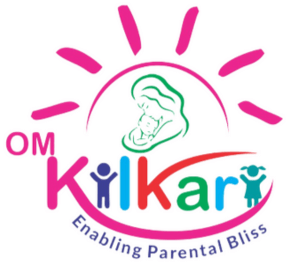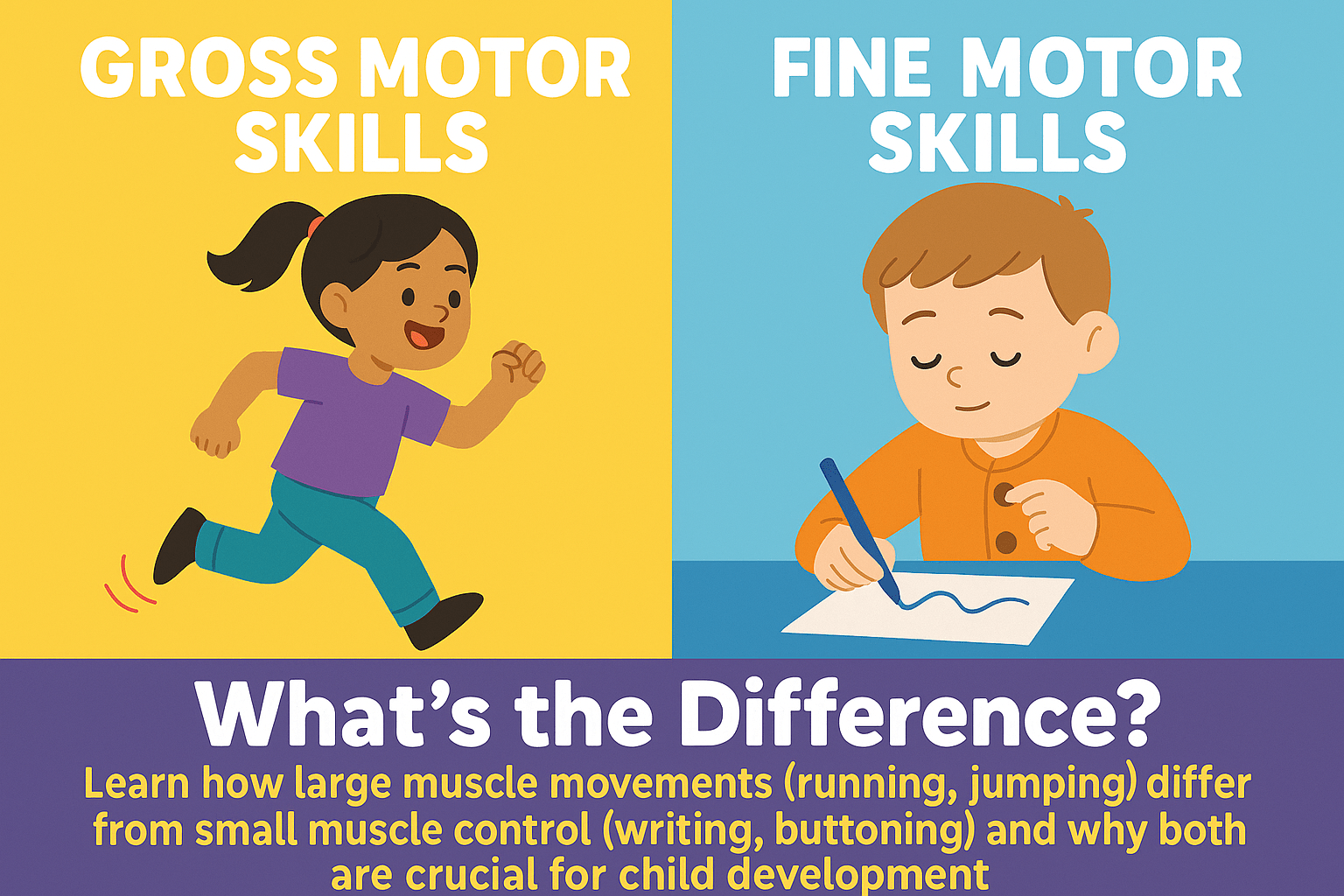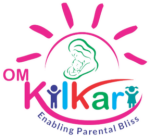Motor skills are the abilities required to control and coordinate the muscles of the body to perform various movements. These skills are broadly categorized into two types: gross motor skills and fine motor skills. Both are essential for daily functioning, but they involve different muscle groups and types of movements. Understanding the difference between them can help in child development, rehabilitation, and overall physical coordination.
What Are Gross Motor Skills?
Gross motor skills involve the large muscles of the body and enable activities that require broad, powerful movements. These skills are crucial for balance, strength, and overall physical coordination.
Examples of Gross Motor Skills:
- Walking, running, and jumping
- Climbing stairs
- Throwing or kicking a ball
- Riding a bicycle
- Swimming
- Balancing on one foot
Development of Gross Motor Skills
Gross motor skills develop from infancy through childhood. Key milestones include:
- Infants (0-12 months): Lifting the head, rolling over, sitting up, crawling.
- Toddlers (1-3 years): Walking, running, climbing.
- Preschoolers (3-5 years): Hopping, skipping, throwing a ball.
- School-age children (6+ years): Improved coordination in sports like soccer or gymnastics.
Why Are Gross Motor Skills Important?
- Promote physical health and fitness.
- Enhance balance and posture.
- Support independence in daily activities.
- Improve confidence in movement-based tasks.
What Are Fine Motor Skills?
Fine motor skills involve the small muscles of the hands, fingers, and wrists, allowing for precise and controlled movements. These skills are essential for tasks that require hand-eye coordination and dexterity.
Examples of Fine Motor Skills:
- Writing or drawing with a pencil
- Buttoning a shirt or tying shoelaces
- Using scissors or tweezers
- Typing on a keyboard
- Playing a musical instrument (e.g., piano, violin)
- Handling small objects like beads or LEGO blocks
Development of Fine Motor Skills
Fine motor skills develop gradually, with key milestones including:
- Infants (0-12 months): Grasping objects, transferring items between hands.
- Toddlers (1-3 years): Scribbling, stacking blocks, turning pages.
- Preschoolers (3-5 years): Using utensils, drawing shapes, dressing independently.
- School-age children (6+ years): Improved handwriting, using tools like rulers and scissors efficiently.
Why Are Fine Motor Skills Important?
- Enable self-care tasks (eating, dressing).
- Support academic success (writing, using computers).
- Improve hand-eye coordination.
- Enhance creativity and problem-solving through activities like puzzles and crafts.
Key Differences Between Gross and Fine Motor Skills
| Aspect | Gross Motor Skills | Fine Motor Skills |
|---|---|---|
| Muscles Used | Large muscles (arms, legs, core) | Small muscles (hands, fingers, wrists) |
| Type of Movement | Broad, whole-body movements | Precise, detailed movements |
| Examples | Running, jumping, climbing | Writing, buttoning, cutting |
| Developmental Focus | Balance, strength, coordination | Dexterity, hand-eye coordination |
| Age of Mastery | Earlier (walking by 1-2 years) | Later (writing by 5-6 years) |
How to Support the Development of Both Motor Skills
For Gross Motor Skills:
- Encourage outdoor play (running, jumping, climbing).
- Engage in sports (soccer, swimming, dance).
- Practice balancing activities (yoga, hopscotch).
For Fine Motor Skills:
- Provide puzzles, LEGO, or bead threading.
- Encourage drawing, coloring, and writing.
- Teach self-care tasks (buttoning, using utensils).
Conclusion
Both gross and fine motor skills are essential for a child’s physical and cognitive development. While gross motor skills involve large movements and whole-body coordination, fine motor skills focus on small, precise hand movements. Supporting the development of both types ensures children grow with the strength, coordination, and dexterity needed for daily life and learning.
Parents, educators, and therapists can foster these skills through play, practice, and age-appropriate activities. By understanding the differences, we can better support children (and even adults in rehabilitation) in mastering these crucial abilities.


